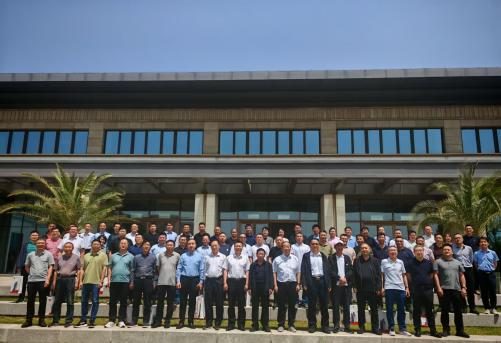Understanding the Role of Vibrating Screens in Aggregate Production Lines
Release Date:
2025-05-23
In the world of aggregate production, the vibrating screen serves as an essential tool for material classification and separation. It is primarily used to sort and filter particles of different sizes, ensuring that the final product meets the required specifications for construction and engineering projects. The design and functionality of vibrating screens are tailored to enhance material handlin
In the world of aggregate production, the vibrating screen serves as an essential tool for material classification and separation. It is primarily used to sort and filter particles of different sizes, ensuring that the final product meets the required specifications for construction and engineering projects. The design and functionality of vibrating screens are tailored to enhance material handling and improve the overall efficiency of the production line.
Vibrating screens operate based on a simple principle: they use vibration to agitate the material on the screen surface, allowing particles to pass through openings or "screens" while larger particles are retained. This process can be adjusted based on the specific needs of the production line, including the screen mesh size, inclination angle, and vibration frequency. By fine-tuning these parameters, operators can effectively manage material flow and maximize the screening efficiency.
One of the significant advantages of using vibrating screens in aggregate production is their ability to handle large volumes of materials. These machines can process various types of aggregates, including sand, gravel, and crushed stone, making them versatile for different applications. Furthermore, the continuous operation of vibrating screens helps reduce downtime, which is crucial for maintaining productivity in a competitive industry.
Another benefit is the improved quality of the final aggregate product. A well-functioning vibrating screen can minimize contamination and ensure that only materials of the desired size are used, which is especially important in construction projects where material quality directly impacts structural integrity. Additionally, the use of vibrating screens can lead to better compliance with environmental regulations by reducing waste and optimizing material recovery.
While vibrating screens offer many advantages, there are also considerations that operators must keep in mind. Regular maintenance and inspection are critical to prevent breakdowns and ensure optimal performance. Factors such as wear and tear on screen surfaces, motor health, and vibration settings should be monitored closely. Investing in quality components and following manufacturer recommendations can enhance the longevity and effectiveness of vibrating screens in the aggregate production line.
In conclusion, the vibrating screen is an indispensable element in the aggregate production process. By understanding its operational mechanics and implementing best practices, industry professionals can significantly enhance their production efficiency and product quality. As technology advances, continuous innovations in vibrating screen design will further improve their performance and capabilities, solidifying their position as a cornerstone of aggregate manufacturing.
Vibrating screens operate based on a simple principle: they use vibration to agitate the material on the screen surface, allowing particles to pass through openings or "screens" while larger particles are retained. This process can be adjusted based on the specific needs of the production line, including the screen mesh size, inclination angle, and vibration frequency. By fine-tuning these parameters, operators can effectively manage material flow and maximize the screening efficiency.
One of the significant advantages of using vibrating screens in aggregate production is their ability to handle large volumes of materials. These machines can process various types of aggregates, including sand, gravel, and crushed stone, making them versatile for different applications. Furthermore, the continuous operation of vibrating screens helps reduce downtime, which is crucial for maintaining productivity in a competitive industry.
Another benefit is the improved quality of the final aggregate product. A well-functioning vibrating screen can minimize contamination and ensure that only materials of the desired size are used, which is especially important in construction projects where material quality directly impacts structural integrity. Additionally, the use of vibrating screens can lead to better compliance with environmental regulations by reducing waste and optimizing material recovery.
While vibrating screens offer many advantages, there are also considerations that operators must keep in mind. Regular maintenance and inspection are critical to prevent breakdowns and ensure optimal performance. Factors such as wear and tear on screen surfaces, motor health, and vibration settings should be monitored closely. Investing in quality components and following manufacturer recommendations can enhance the longevity and effectiveness of vibrating screens in the aggregate production line.
In conclusion, the vibrating screen is an indispensable element in the aggregate production process. By understanding its operational mechanics and implementing best practices, industry professionals can significantly enhance their production efficiency and product quality. As technology advances, continuous innovations in vibrating screen design will further improve their performance and capabilities, solidifying their position as a cornerstone of aggregate manufacturing.





